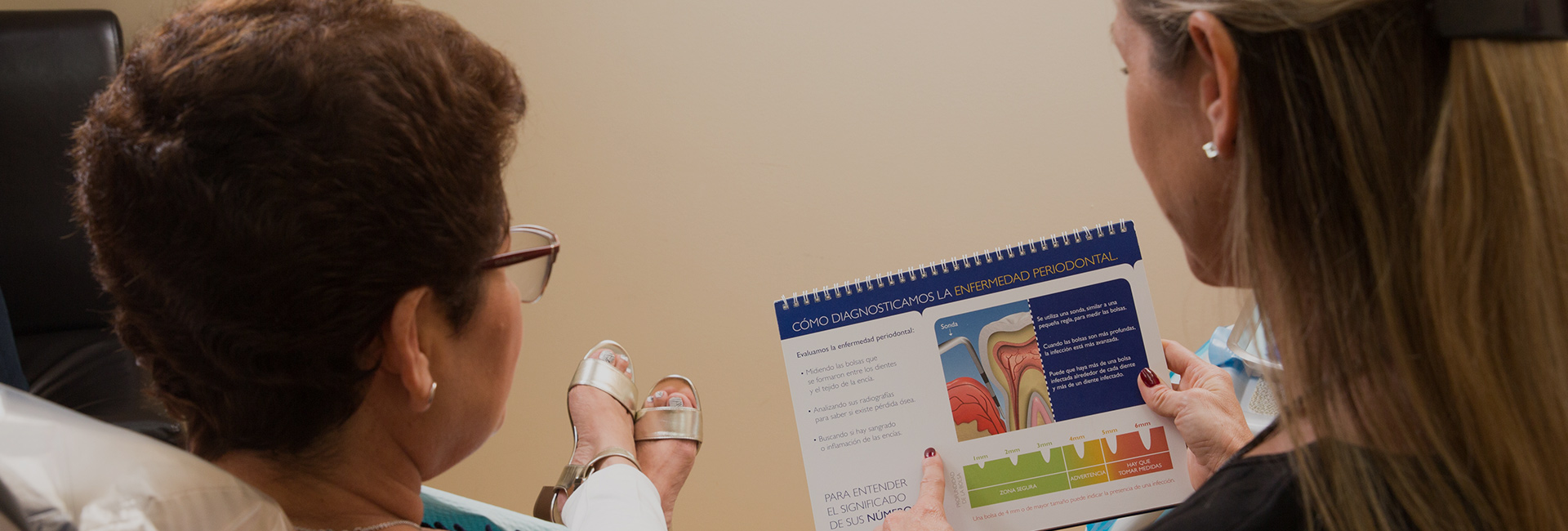Periodontal disease, which is marked by inflammation of the gum tissue, can have serious consequences for your oral health. In its most advanced stages, this condition can cause the loss of teeth and bone tissue. The rest of your body may also suffer when the uncontrolled periodontal disease is present, as this condition appears to have a relationship with systemic diseases, such as diabetes and heart disease, and it may also contribute to certain pregnancy problems. Fortunately, gum disease can be prevented. However, patients must also be diligent about monitoring their gums for signs of the disease so that they can seek treatment quickly before the disease has the opportunity to advance.
Signs And Symptoms Of Gum Disease
Gum disease is a progressive condition, with more severe symptoms emerging in the later stages of the disease. Gingivitis, an early stage infection of the gum tissue, causes redness, swelling, and bleeding in the gums. Some patients think that bleeding gums aren’t a problem if it just occurs while they are brushing or flossing, but this symptom always indicates a problem and warrants follow-up with your dentist.
As gingivitis advances into periodontitis, more significant symptoms emerge. Pockets will develop between the teeth and the gums, and the gum tissue may begin to recede. In the most severe form of periodontitis, the teeth can become loose, and they may ultimately be lost, along with bone tissue.
Gum Disease Treatment
Effective gum disease treatments are available, and they produce the best results with the least amount of discomfort for patients when treatment occurs early in the disease process. Gingivitis usually responds well to a thorough professional cleaning. When pockets have developed in the gums, more involved and invasive interventions are needed. The patient may undergo a scaling and root planing, which begins with a thorough cleaning to remove bacteria and then proceeds to eliminate rough spots on the root of the tooth where bacteria might also congregate. Antibacterial therapy may also be incorporated into scaling and root planing as an additional preventive measure.
A patient with receding gums may need surgery to graft replacement tissue to the site of recession. Another type of gum surgery, crown lengthening, is not necessarily related to gum disease but can help the teeth and gums appear proportional to each other when excess gum tissue is present.
Gum Disease Prevention
Because gum disease is caused by oral bacteria attacking the gum tissue and creating inflammation, minimizing the presence of that bacteria can help to prevent gum disease. If you brush twice each day, floss daily and see your dentist every six months for professional cleanings, you’ll be doing a lot to reduce your risk of gum disease.
If you’ve already had an episode of gum disease, it’s important to follow up with your dentist for recommended maintenance treatments and monitoring so that a relapse is less likely. Diligence about your oral hygiene regimen will also help you to avoid a subsequent episode of periodontal disease.


